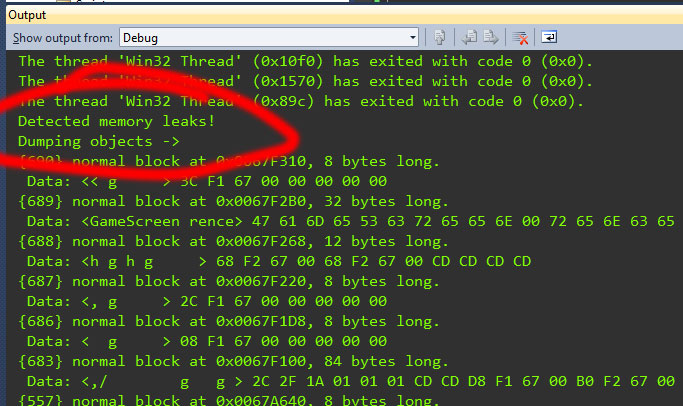

Select Debug to open the Debug mode, and then select Memcheck on the toolbar.In the Projects mode, select a debug build configuration.
#MEMORY LEAK INSTALL#
On Windows, you can use the Heob heap observer to receive similar results.Īfter you download and install Valgrind tools, you can use Memcheck from Qt Creator. You can run it on a remote host or device from any development machine. Clear them once the job is done, don't leave event listeners running forever, especially if they are going to hold on to any object reference from the parent scope.Note: You can install and run Memcheck locally on Linux. The same goes for event listeners and observers. Also, clear timers when done, using clearTimeout and clearInterval methods. When it comes to timers, always remember to pass copies of objects and avoid mutations.

Such cases can also be avoided by creating copies of the object and following the immutable approach mentioned earlier. The memory leak, in this case, can be fixed by nullifying originalThing at the end of the replaceThing function.
#MEMORY LEAK CODE#
The code above creates multiple closures, and those closures hold on to object references. This will also become a global variable as arrow functions // do not have a contextual `this` and instead use a lexical `this` const hello = () => setInterval ( replaceThing, 1000 ) Timers & Events: The use of setTimeout, setInterval, Observers and event listeners can cause memory leaks when heavy object references are kept in their callbacks without proper handling.Which means you can easily end up in situations where a closure holding such reference can be improperly used leading to a memory leak When a closure holds a reference to a large object in heap, it keeps the object in memory as long as the closure is in use. Closures: JavaScript closures have the cool feature of memorizing its surrounding context.Multiple references: When the same object is referenced from multiple objects, it might lead to a memory leak when one of the references is left dangling.Having a large graph of objects referenced from the root can lead to a memory leak. This applies to any object referenced by the global variables and all their children as well.


You should check out Visualizing memory management in V8 Engine to get a better understanding of how memory is structured and utilized by JavaScript in V8. NodeJS uses the V8 Engine for JavaScript. This means understanding how memory is managed by the JavaScript engine used by NodeJS. To understand memory leaks, we first need to understand how memory is managed in NodeJS.


 0 kommentar(er)
0 kommentar(er)
